Hi dear Steemians!!!!! Today we'll talk about the Human vision, enjoy the reading :)
To understand the mechanism of human vision we have to distinguish three parts:
The eye: an optical system that shapes and projects images on a sensitive surface
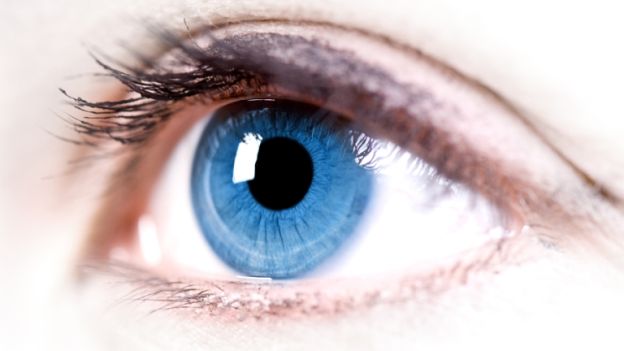
The retina: a sensitive surface that collects images, makes a first processing, and transmits information to the upper centers (side geniculate body, visual cerebral cortex)

The brain: a computer of data coming from the retina that further elaborates them and "shape" the definitive image.
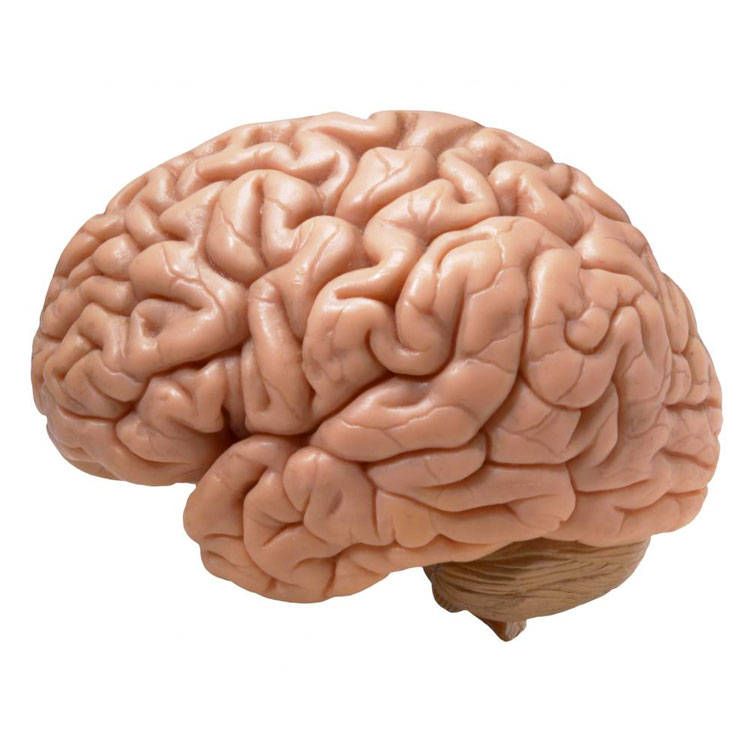
When we have an idea of how these three systems work, we will be able to study visual perception.
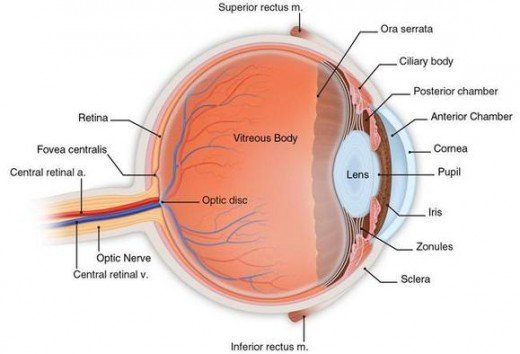
The human eye is a relatively simple optical system, consisting of a diopter (cornea, aqueous mood, and vitreous mood), And a biconvex lens, the crystalline, in which the curvature of the front face can be altered by the contraction of the ciliary muscles, thus varying the focal length of the lens (accommodating). Cornea, front, crystalline chamber and rear chamber as a whole form a converging lens which projects images on the retina, shrunken and overturned. A muscular membrane, the iris, at the center of which is an opening, the pupil, serves to regulate the amount of light that enters the eye.
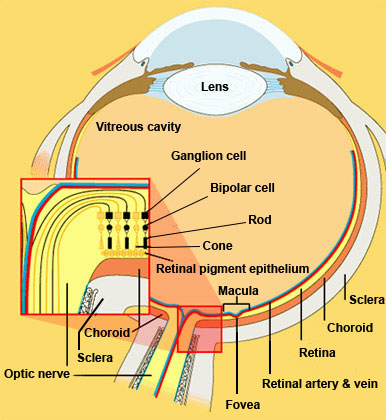
The sensitive surface of the eye is made up of photoreceptors (rods and cones) whose task is to transform the electrical information received from the photochemical reactions that are activated by the light radiation and to send these signals to the retinal neuronsc (horizontal, bipolar, amacrine and ganglionic cells) they are differently connected to each other and perform a first visual signal processing. The axons of ganglion cells gather in order to form the optic nerve, a cable that leads visual information out of the retina to the upper centers, first to the side geniculate body and hence to the cortical areas. The nerve fibers from different points of the retina are directed to different points of the geniculate nucleus (LGN) and cerebral cortex, thus recreating a brain retinal map in the brain.
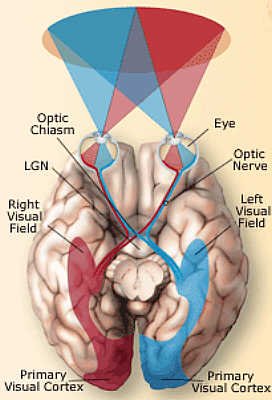
Optics: chiasma, geniculate body, visual cortex area 17, in the geniculate body, the image undergoes a first processing that seeks to highlight the object against the background, its contours, contrast differences.
Each of us has a "hole" in its own field of vision, one by eye, and it does not perceive it: the missing part of the image is rebuilt and deduced from what is seen around it.
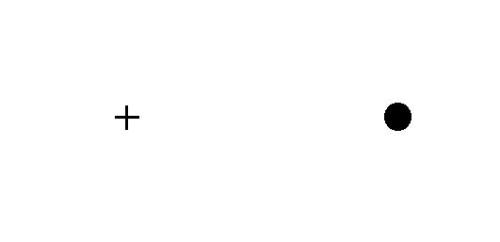
Look at graphic. Sit at your computer with your nose pointing in between the cross and the black circle. Cover your left eye and stare at the cross with your right eye. Now slowly move towards the computer screen while still staring at the cross with your right eye. At somewhere around 10-14 inches from the computer screen the black circle will disappear and the area where the black circle was…will now be all white, this is your blind spot.
If you move closer to the screen or farther away, the circle will re-appear. At just the right distance, the circle will disappear.
Now try the other eye…but this time cover your right eye and look at the circle with your left eye…..move closer and you will see that the cross now disappears!!
All the bottom of the eye is covered by photoreceptors, except at one point, an area of 1.5 millimeters in diameter, where the nerves and blood vessels of the retina converge, so this point is not sensitive to light, it is an area without information. However, the brain can reconstruct the missing image through a process called "filling in", studied by American, Swiss, Dutch and Japanese researchers. They found that the part of the visual cortex that corresponds to the blind spot is active during the filling process, although it does not receive any retinal information directly.
Perception is a reconstructive simulation generated by the brain, under the control of a genetic determinant, of the interactions between us and the material environment that surrounds us and our knowledge and previous experiences:
What is perceived is different from the external object it represents. With a good expression of NeuroLinguistic Programming we can say: the map is not the territory, and each one of us constructs different maps of the same territory and also different maps from moment to moment, depending on our degree of attention, our needs, our motivations.

Visual perception depends on the ability to form and store brain images, through the information received from the eye. The most peripheral parts of the retina contain only sticks and do not distinguish either the shape or the colors of the objects, but when an object enters the eye field, determine the instinctive movement of the head and eye itself in order to bring the Image in the central area of the retina, where you have the maximum capacity to "see".
The man moving toward the central area of the retina has a clearer vision, reaching to the maximum in the fovea, at the center of the lutea spot where only cones are present.
If the total vision of the holding eye embraces a field of 140 ° horizontally and about 120 ° in the vertical direction, the vision of the lutea spot embraces a field of 8 and 6 degrees respectively, while that of the fovea is slightly more than 1 degree .
Analyzing a visual scene, such as observing a picture or a panorama, is closely associated with foveal vision.

Therefore, when observing a stationary scene, the eyes are scanning the field of vision with rapid movements (saccadic movements) alternating with fixations. In general, scanning of the field of view is not regular, except for special cases such as reading, where there is a serial organization of visual information. Thus, in general, fixings are not uniformly distributed on the observed figure: some areas are ignored and others are frequently visited (fixed).
Visual information can be acquired by the central nervous system only during fixations, as saccadic movements are active inhibitory mechanisms.
Thank you for reading, as always, I hope you enjoyed it, and I renew my invitation to choose you the next topic in the series, hoping someone would ask :)
See you soon with "HOW DOES IT WORK?"